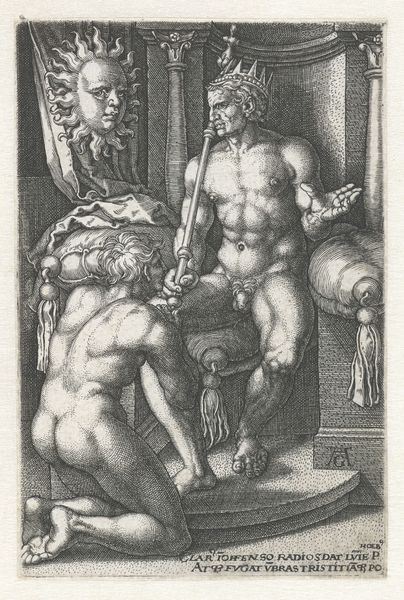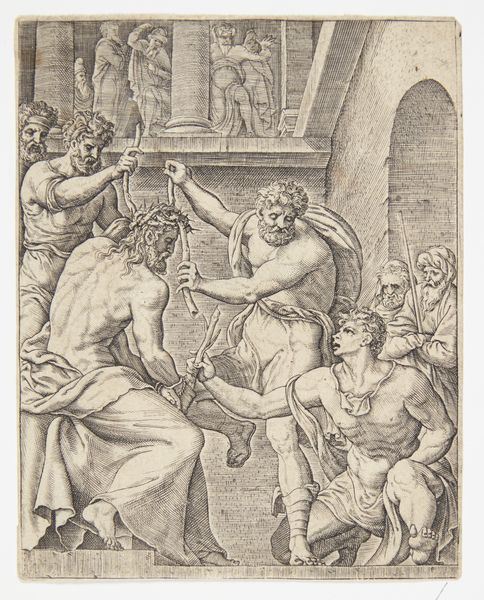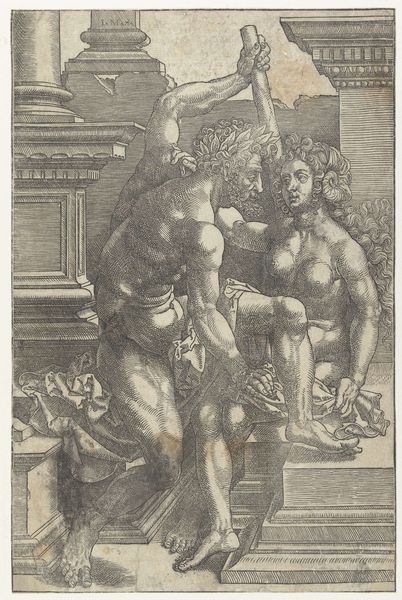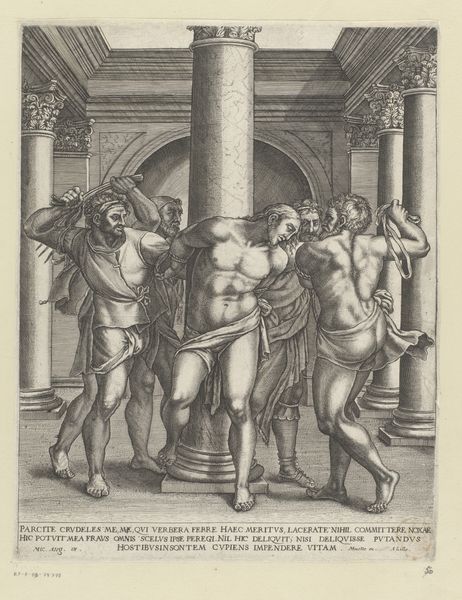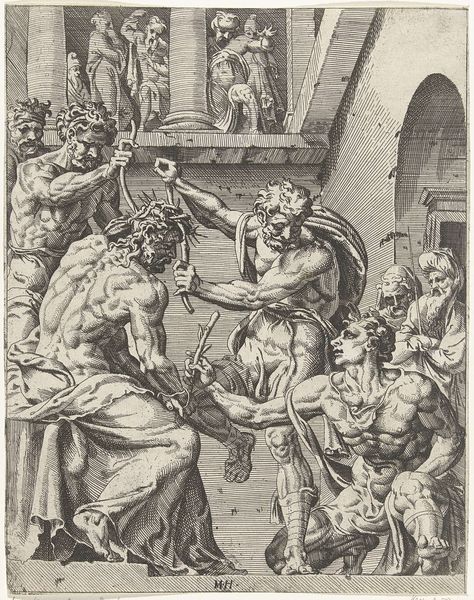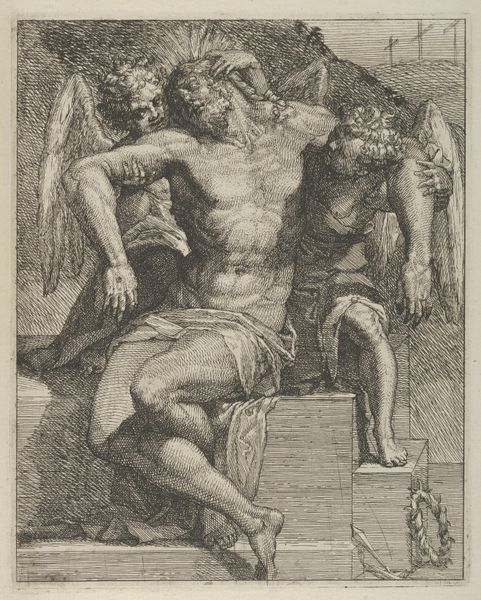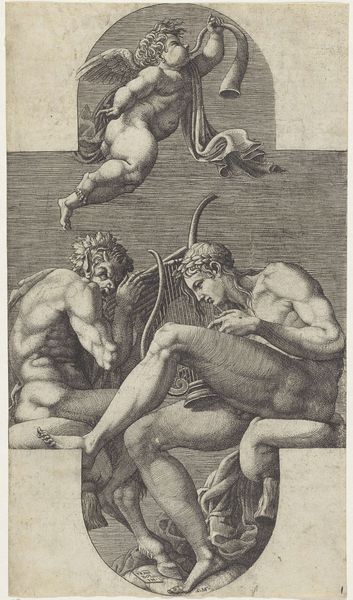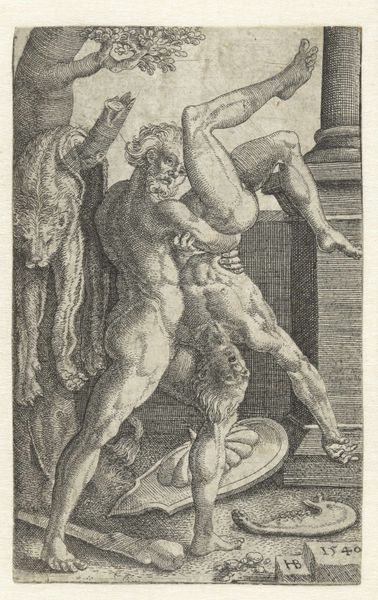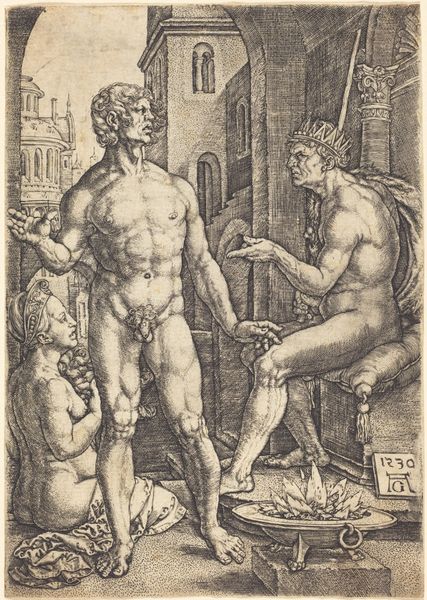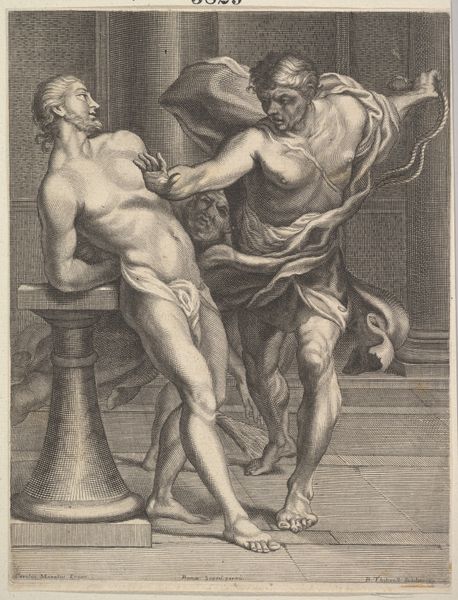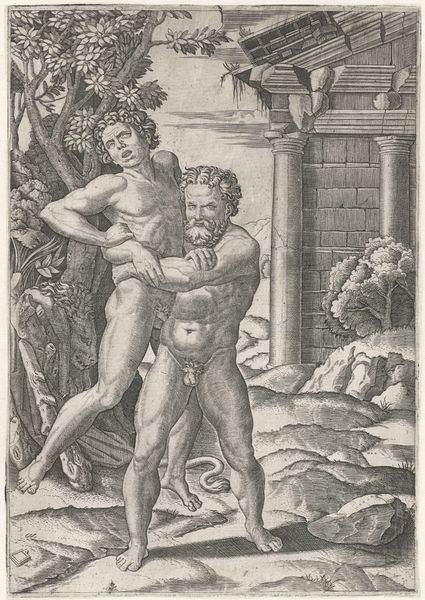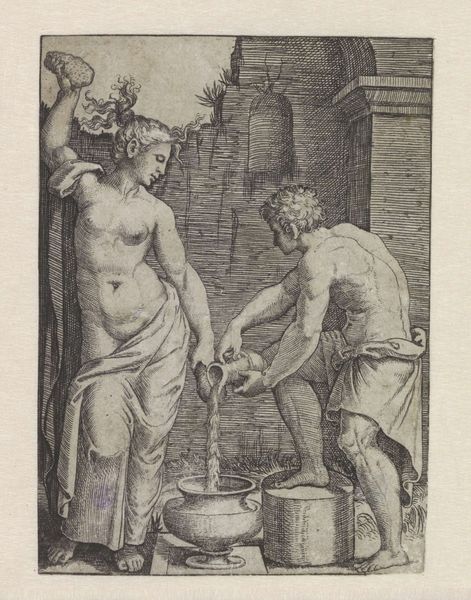
Bacchus kijkt toe hoe een man en vrouw en twee kinderen manden met druiven dragen voor de bereiding van wijn 1517 - 1570
0:00
0:00
engraving
#
narrative-art
#
landscape
#
classical-realism
#
figuration
#
11_renaissance
#
history-painting
#
italian-renaissance
#
nude
#
engraving
Dimensions: height 195 mm, width 144 mm
Copyright: Rijks Museum: Open Domain
Curator: Let's delve into this engraving, "Bacchus kijkt toe hoe een man en vrouw en twee kinderen manden met druiven dragen voor de bereiding van wijn," dating back to 1517-1570 by an anonymous artist, currently held at the Rijksmuseum. Editor: It feels so... celebratory. It depicts the grape harvest for wine making, using a printmaking technique to portray the figures carrying all these grapes. What's your perspective on it? Curator: Consider the labor represented. We see figures engaged in the physical act of production. Notice the material reality – the baskets laden with grapes, the vat being filled, even Bacchus lounging on a barrel, a product of that same labor. What does the presence of Bacchus suggest about the cultural perception of this labor and its products? Editor: I suppose the act of making wine wasn't simply labor; it was a connection to something divine, celebrated with hedonism and freedom. How would class structure be depicted? Curator: Exactly. The process of winemaking, often linked to religious ceremony, highlights how certain modes of production achieve elevated status. But let's push further – how might the choice of engraving as a medium also reflect this connection between labor and value? Editor: Hmmm, because the print is reproducible? And would therefore democratize imagery or spread messages easier than painting to the less wealthy. The image depicts working people as the real figures of society and how they are depicted can be important. Curator: Precisely! Its reproducibility challenges notions of unique artistic genius. It implicates both the artisan who made the print and the hands who harvested grapes. I appreciate you noticed how it reflects and reinforces societal ideas around labor, leisure, and even divinity. Editor: I never thought about wine production this way, so it's great to discuss. I learned that by zooming in on materiality and means of production can challenge established concepts about labor, class and culture!
Comments
No comments
Be the first to comment and join the conversation on the ultimate creative platform.
